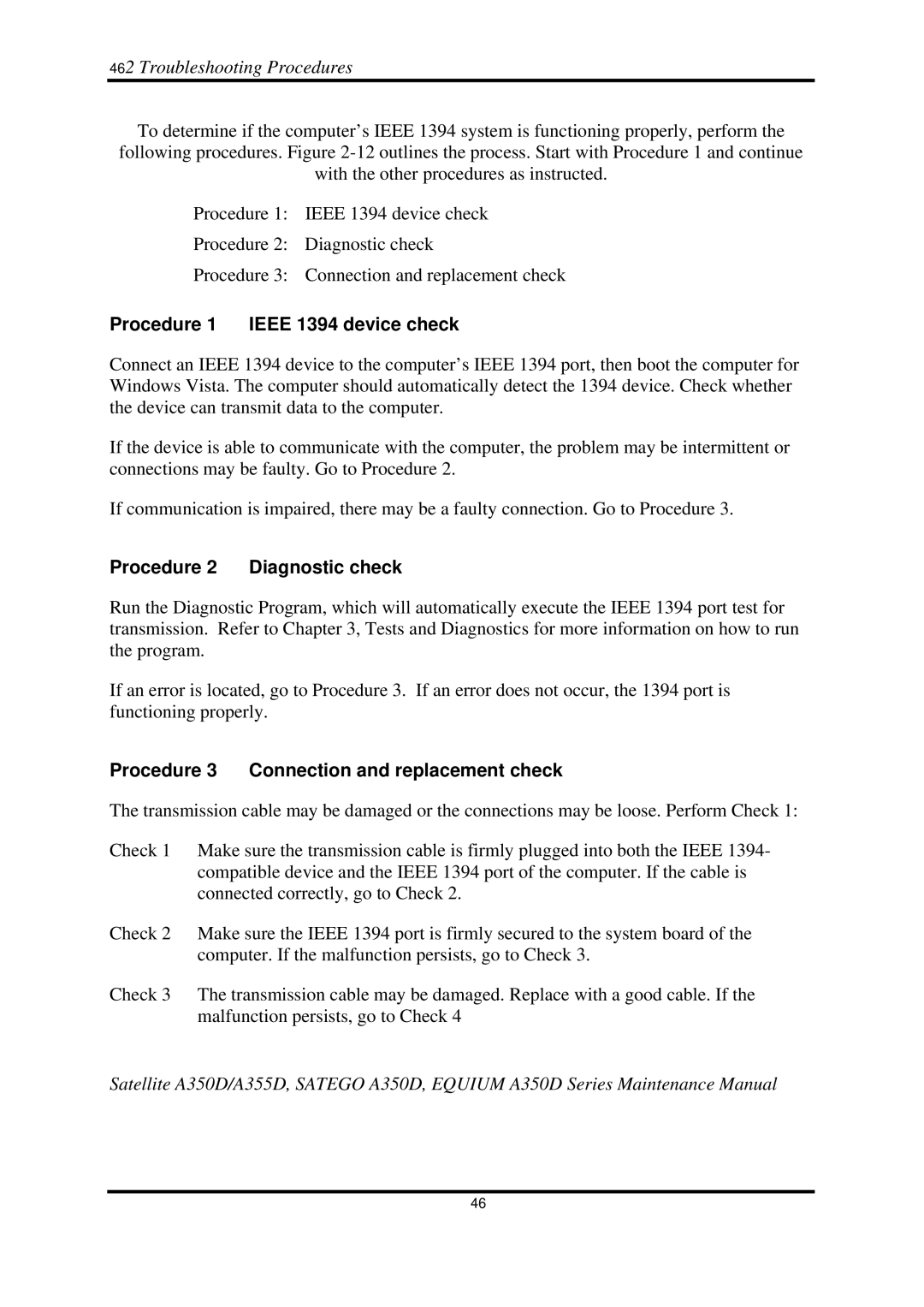
462 Troubleshooting Procedures
To determine if the computer’s IEEE 1394 system is functioning properly, perform the following procedures. Figure
Procedure 1: IEEE 1394 device check
Procedure 2: Diagnostic check
Procedure 3: Connection and replacement check
Procedure 1 IEEE 1394 device check
Connect an IEEE 1394 device to the computer’s IEEE 1394 port, then boot the computer for Windows Vista. The computer should automatically detect the 1394 device. Check whether the device can transmit data to the computer.
If the device is able to communicate with the computer, the problem may be intermittent or connections may be faulty. Go to Procedure 2.
If communication is impaired, there may be a faulty connection. Go to Procedure 3.
Procedure 2 Diagnostic check
Run the Diagnostic Program, which will automatically execute the IEEE 1394 port test for transmission. Refer to Chapter 3, Tests and Diagnostics for more information on how to run the program.
If an error is located, go to Procedure 3. If an error does not occur, the 1394 port is functioning properly.
Procedure 3 Connection and replacement check
The transmission cable may be damaged or the connections may be loose. Perform Check 1:
Check 1 Make sure the transmission cable is firmly plugged into both the IEEE 1394- compatible device and the IEEE 1394 port of the computer. If the cable is connected correctly, go to Check 2.
Check 2 Make sure the IEEE 1394 port is firmly secured to the system board of the computer. If the malfunction persists, go to Check 3.
Check 3 The transmission cable may be damaged. Replace with a good cable. If the malfunction persists, go to Check 4
Satellite A350D/A355D, SATEGO A350D, EQUIUM A350D Series Maintenance Manual
46
